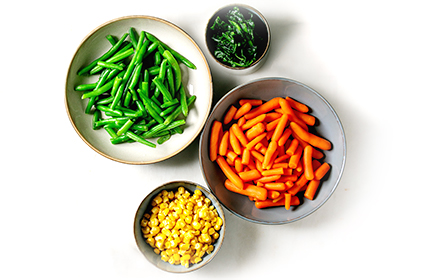Integrated Approach to Climate Adaptation and Mitigation: Application to Fruit & Vegetable Supply Chains
-

December 15, 2020
2:30 pm - 3:00 pmAmerican Geophysical Union Fall Meeting, 2020 (Virtual)
Washington, DC, USA
Video
Overview
Dr. Dave Gustafson delivered an oral presentation about the Fruit and Vegetable Supply Chains: Climate Adaptation and Mitigation Opportunities project as part of the session on Global Environmental Change at the 2020 Fall Meeting of the American Geophysical Union. Dr. Ranjan Parajuli (University of Arkansas) also had a poster presentation about the project during this session.
Abstracts
Integrated Approach to Climate Adaptation and Mitigation: Application to Fruit & Vegetable Supply Chains
Dave Gustafson, Agriculture & Food Systems Institute
Senthold Asseng, University of Florida
Food systems are increasingly challenged to meet growing demand for specialty crops (including fruits and vegetables) due to the effects of climate change and increased competition for resources. We have developed a novel integrated methodology for studying food supply chains that includes climate, crop, economic, and life cycle assessment (LCA) models, and have now applied it two important plant-based sources of food in the US: processed potato and tomato. We assess the effectiveness of changing management strategies to address climate change and the opportunity to relocate away from regions with increased water scarcity. We find that supply chains for two popular processed products in the United States, French fries and pasta sauce, will be remarkably resilient, through planting adaptation strategies that avoid higher temperatures. Land and water footprints will decline over time due to higher yields, and GHG emissions can be mitigated by waste reduction and process modification. Our integrated methodology can be applied to other crops and geographies, and the results could inform decision-making at multiple steps along supply chains.
Evaluating Sustainability of Fresh and Processed Potato and Tomato Products
Ranjan Parajuli, Marty Matlock, and Greg Thoma, University of Arkansas
A life cycle assessment (LCA) method was used to evaluate environmental footprints of potato products (fresh, chips, frozen fries and dehydrated) and tomato (fresh and pasta sauce). Functional unit (FU) was 1 kg product eaten, at consumer stage. Life Cycle inventory for the agriculture systems covered the crop reporting districts (CRDs), capturing the 80% of total US production. Crop yields, nutrients uptakes and irrigation water requirements were simulated using mechanistic crop models. Environmental footprints of the fresh and processed products showed mixed results, e.g. consuming 1 kg fresh potatoes (fried in oil) had higher greenhouse gas emissions (GHGEs) compared to consuming the same amount of potato-chips and dehydrated product (0.97 vs 0.85 and 0.65 kg CO2-eq/FU). GHGEs for potato-frozen fries (deep fried at consumer) was highest among the potato products (1.21 kg CO2-eq/FU). Likewise, in the order of fresh vs chips vs fries vs dehydrated products, fossil resource scarcity (FRS) was 0.25 kg oil-eq. vs. 0.22, 0.31 and 0.22; fresh water eutrophication (FEP) was also higher in processed products (3.11*10-4 vs 2.69*10-4, 2.83*10-4 and 2.33*10-4 kg P-eq/kg product(s)); water consumption (WC) was fairly same (e.g. 0.093 vs. 0.099, 0.11 and 0.096 m3/FU). For tomato products, GHGEs was about 2 times higher in sauce than for the fresh (sauce = 1.5 kg CO2-eq/FU). FRS for fresh and processed tomatoes was 0.24 and 0.51 kg oil-eq/FU respectively, FEP (3.08*10-4 vs 4.46*10-4 kg P-eq/FU) and WC (0.03 vs. 0.18 m3/FU). Management of biowaste and co-products credited the impacts, e.g. GHGEs was reduced by 9-14% for the processed potato products (Fig 1). Environmental impacts were largely determined by the resources use at processing and during the food preparation at consumer stage. Example, instead of deep frying, consuming oven-heated fries can reduce GHGEs by 19%. A 10% reduction of the waste can reduce GHGEs and WC by 1-3% for the selected products. Exclusion of the secondary and tertiary packaging materials can lower the GHGEs by 4% and 4-13% respectively for fresh and processed potato products; and for fresh and processed tomatoes it was respectively 10% and 1% lower. Hence, environmental mitigation opportunities were associated with optimization of logistics, waste reduction and efficient use of resources.
Speakers

Dr. Dave Gustafson
Agriculture & Food Systems Institute
